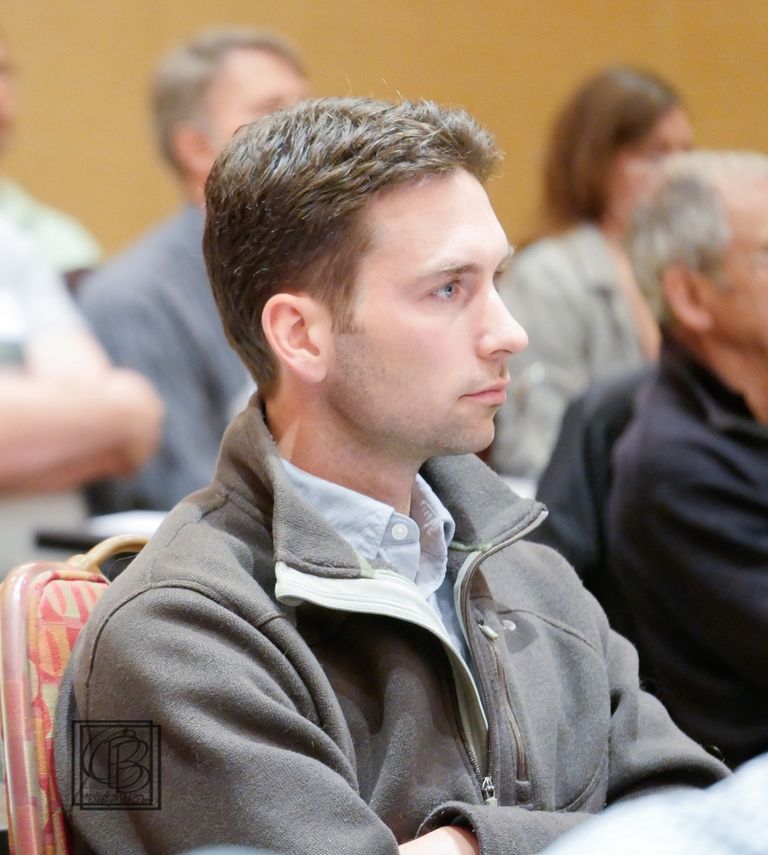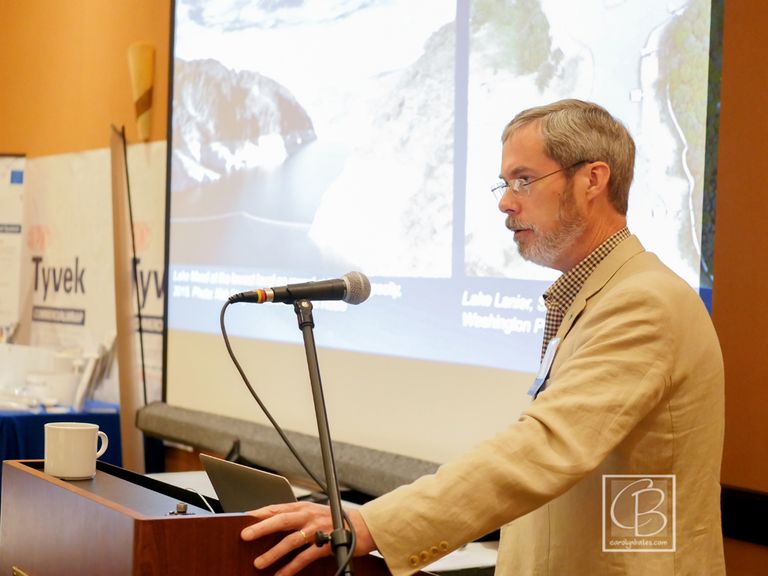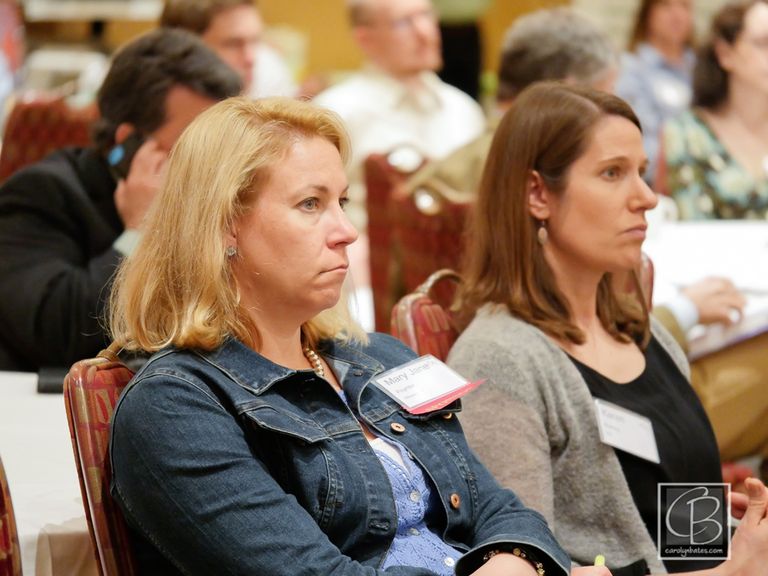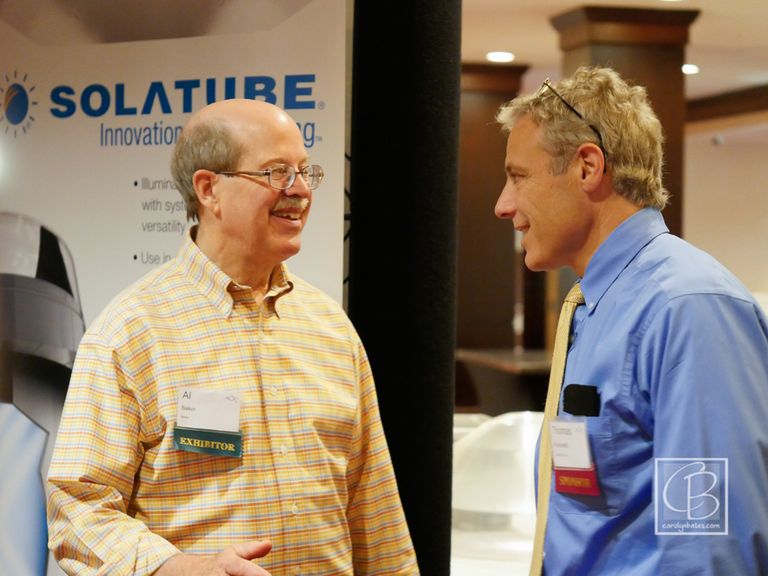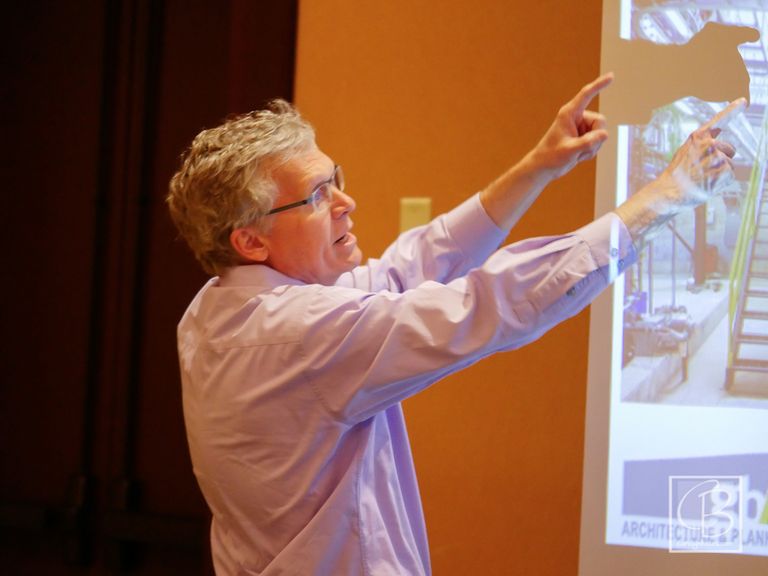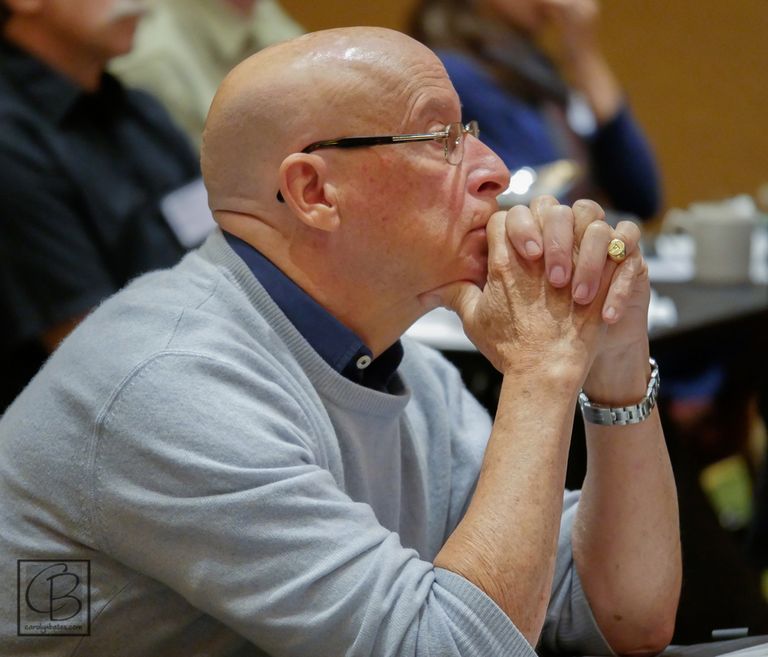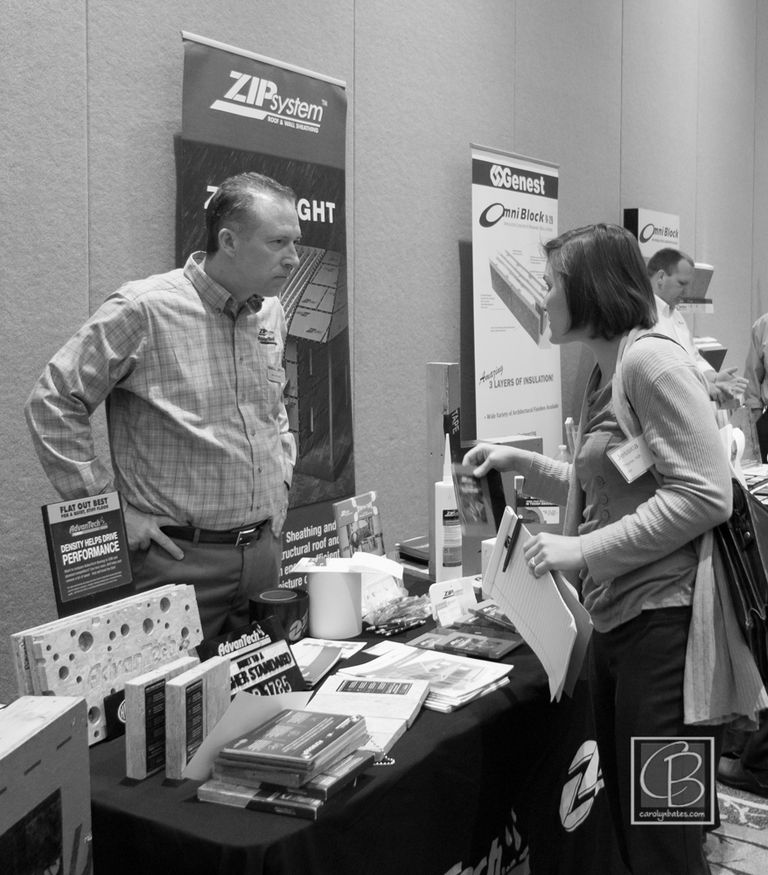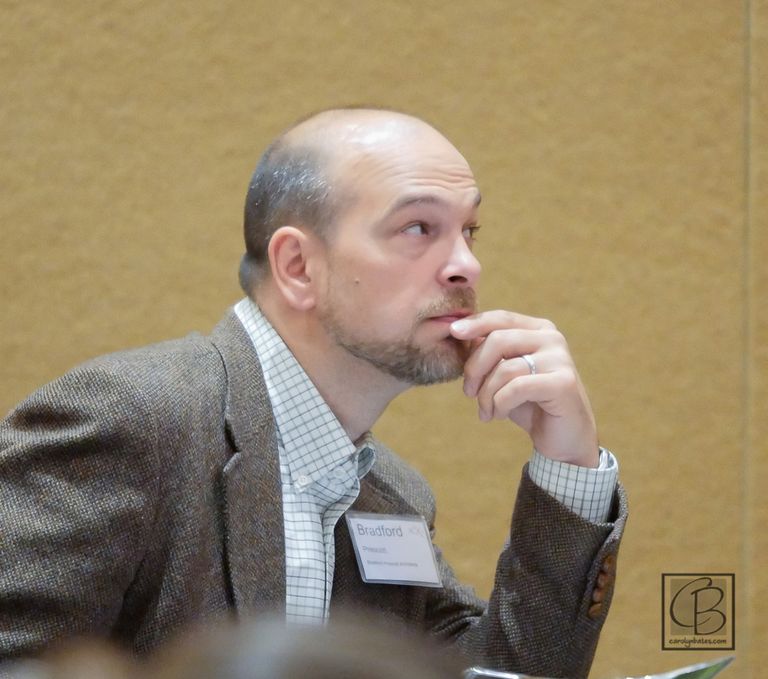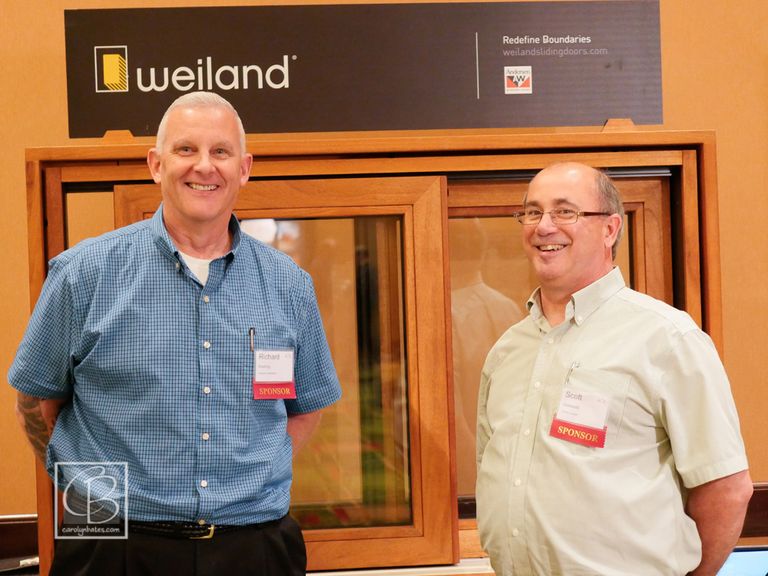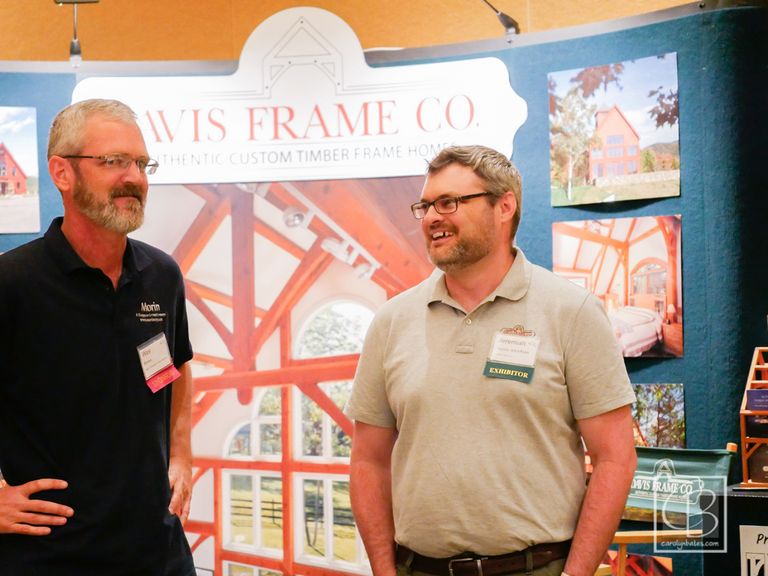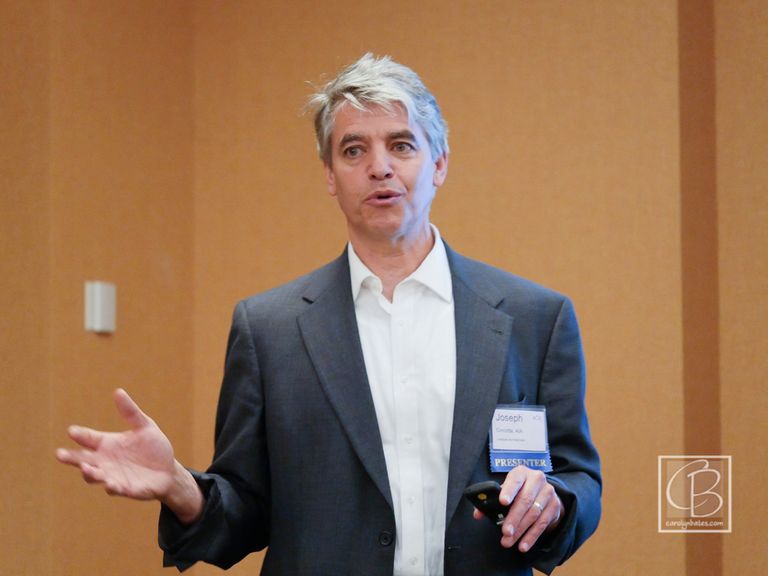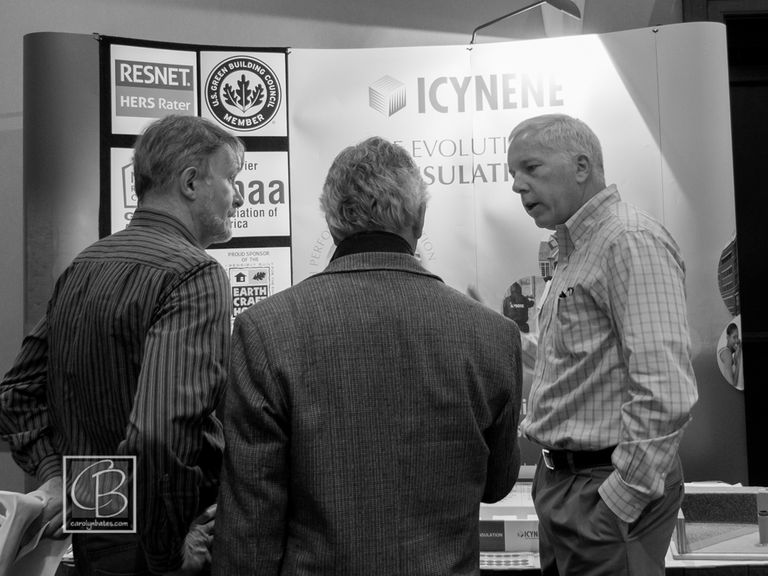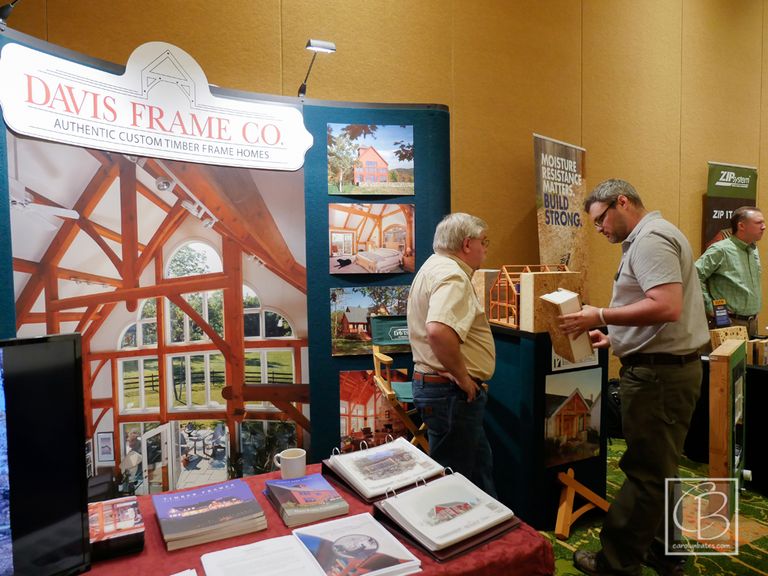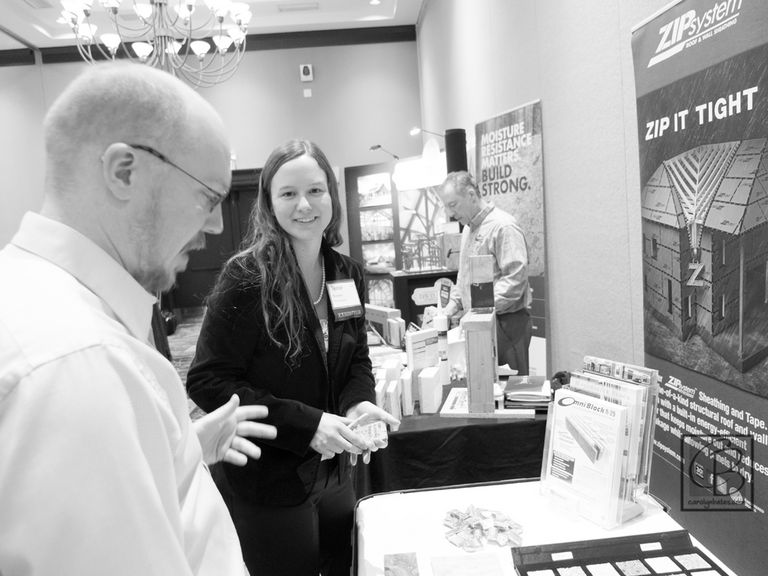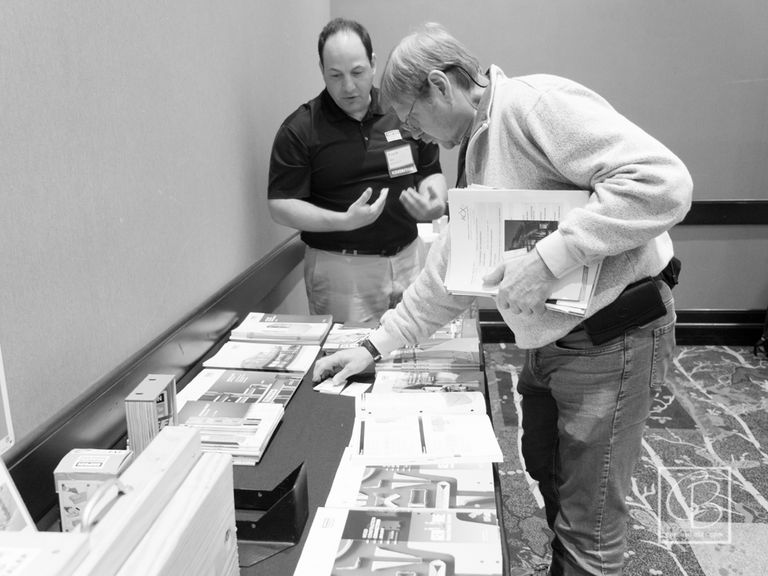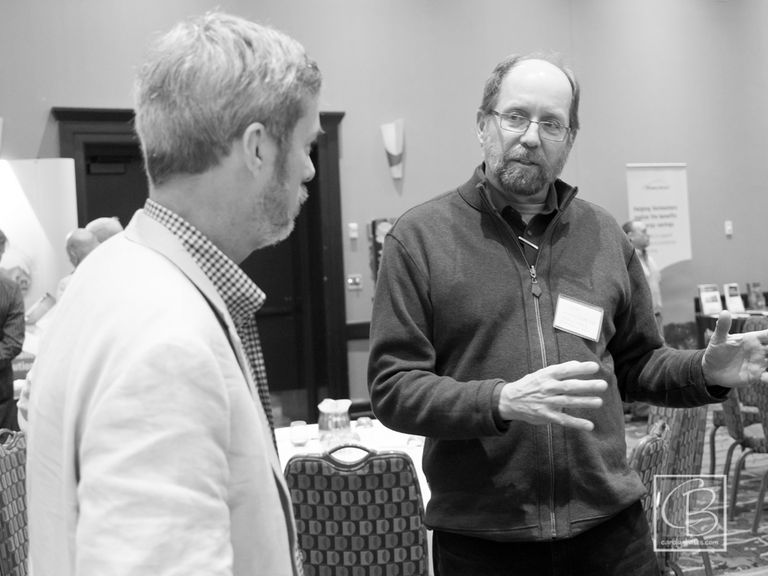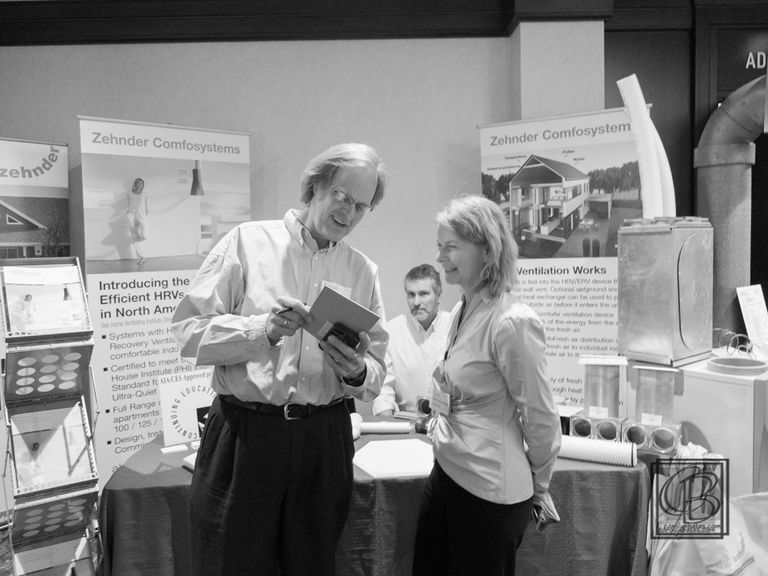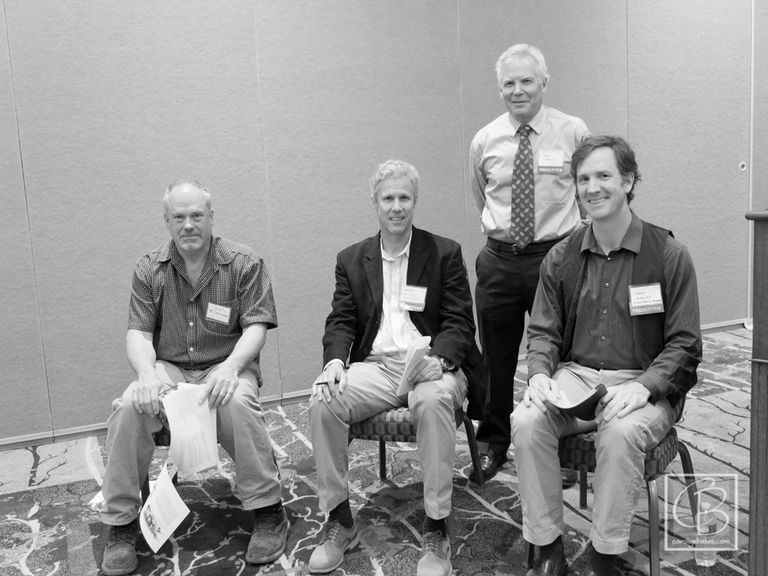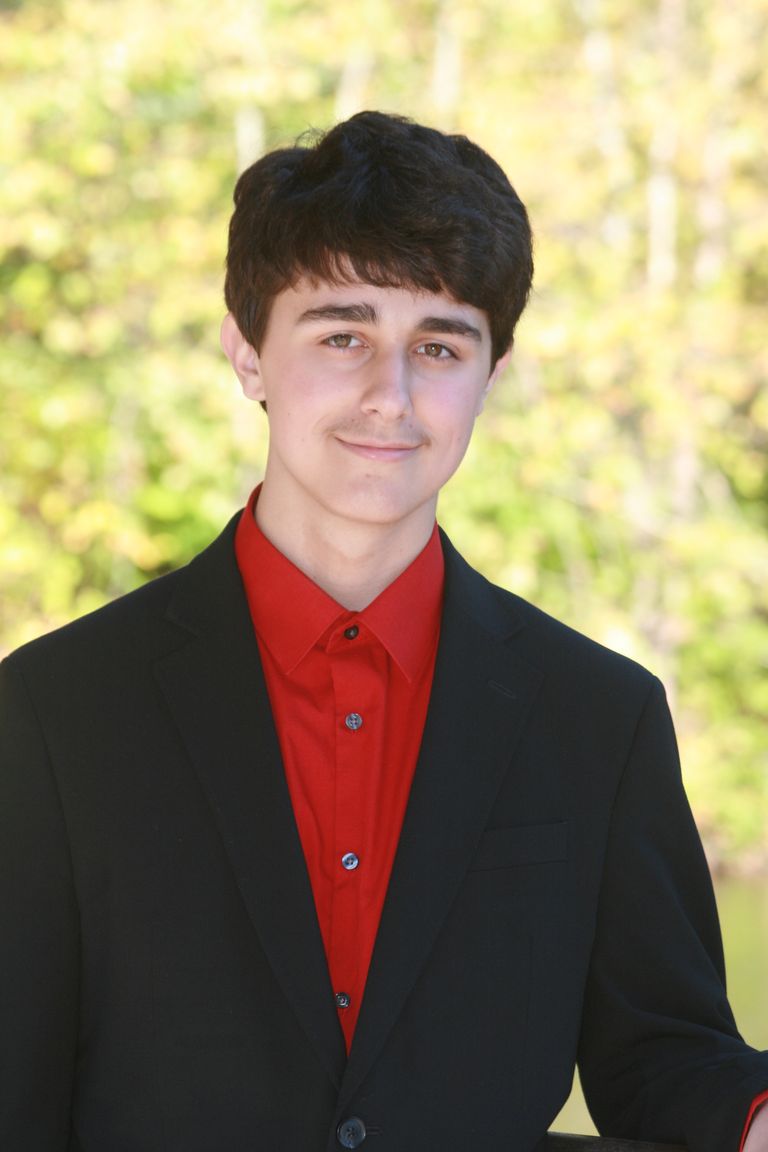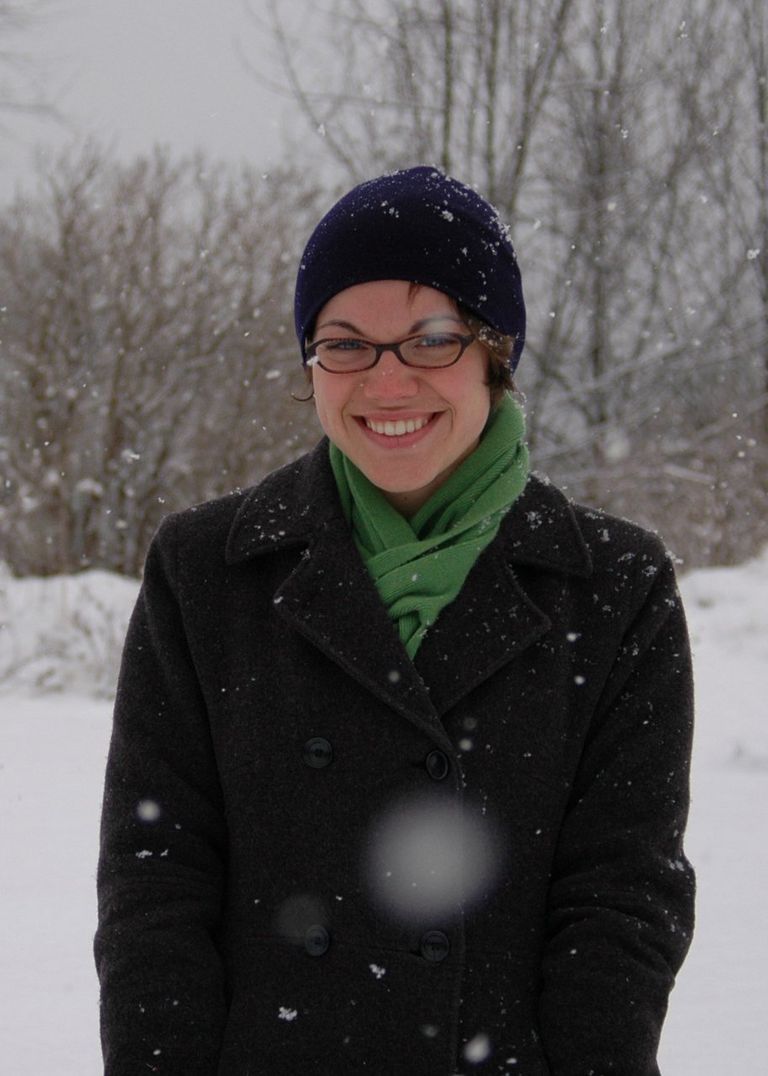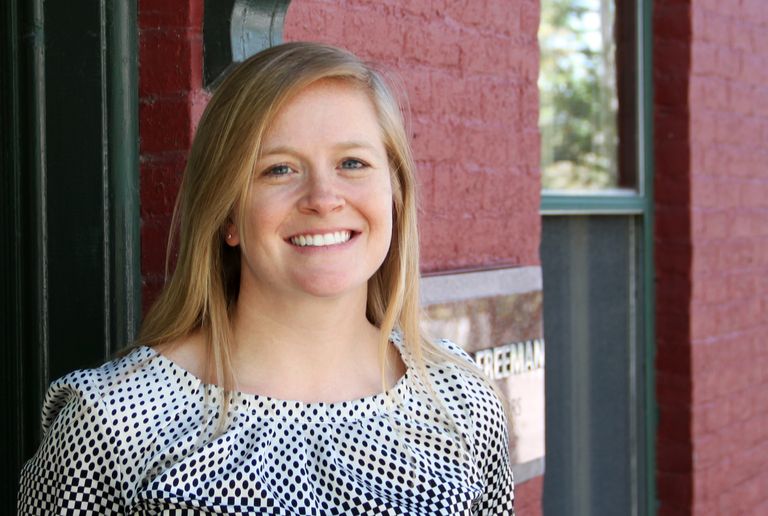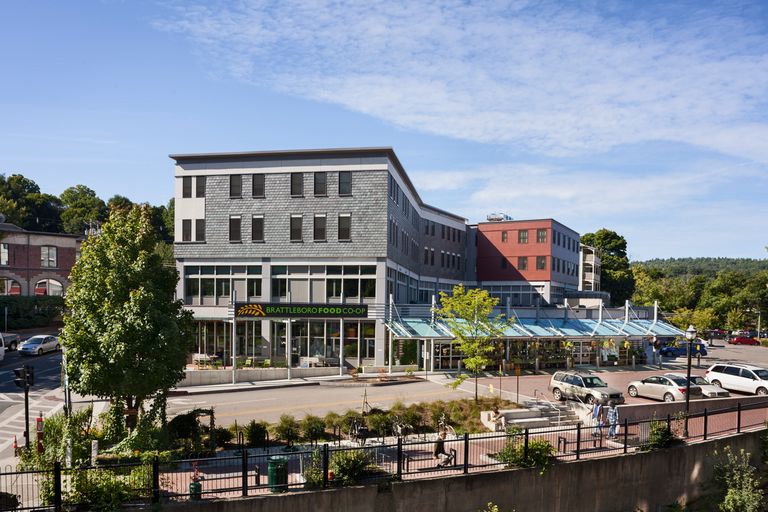7.15 AIAVT News
Polish Up Your Clubs: AIAVT to Hold 7th Annual Guy W. Teschmacher Memorial Golf Tournament
AIAVT members and colleagues are urged to save Friday, September 18, 2015 on their calendars for AIAVT’s 7th Annual Guy W. Teschmacher Memorial Golf Tournament at the Williston Golf Club. More...
from the PRESIDENT
My how time flies when you’re having fun! The first half of my presidency is complete and AIA Vermont is building quite a presence nationally. More...
Architect/Engineer (A/E) Joint Ventures: A Liability Challenge
Collaboration seems to be a key concept in today's design and construction environment. Integrated project delivery, design-build, and other alternative project delivery methods emphasize nontraditional arrangements and partnerships among designers More...
NCARB Tackles the Great “Intern” Title Debate
The National Council of Architectural Registration Boards (NCARB) will embark on a new initiative to sunset the usage of the term “intern” as a way to describe those who are working to become architects versus those who are already licensed architects. More...
Archistream Ready to Hit the Road for Spring & Summer 2015
Over the past year AIA Vermont’s Archistream has hosted over 89,000 visitors. Many of our members were among those visitors. For those who were not, there’s still opportunity for AIAVT’s architects, associates, professional affiliates, and colleagues to visit or avail themselves of this unique and wonderful vehicle. More...
AIAVT & CSI-VT Present ACX Conference
AIA Vermont and the Construction Specifications Institute, Vermont Chapter (CSI-Vermont) held their second annual joint ACX architecture and construction expo on May 20-21. More...
Message From The President Re: Membership
AIAVT ANNOUNCES VERMONT SCHOLAR PROMISE AWARD RECIPIENTS
AIAVT is pleased to announce the recipients of its very first Vermont Scholar Promise Awards. More...
Polish Up Your Clubs: AIAVT to Hold 7th Annual Guy W. Teschmacher Memorial Golf Tournament
AIAVT members and colleagues are urged to save Friday, September 18, 2015 on their calendars for AIAVT’s 7th Annual Guy W. Teschmacher Memorial Golf Tournament at the Williston Golf Club.
The Williston Golf Club located in Williston, Vermont is a legendary course with an old-style parkland layout that was built the old-fashioned way, using the natural features of the land. The course offers patrons exceptional conditions for all types of golfers.
This year’s Golf Tournament Committee consists of co-chairs Marsha Wilmot and Keith Robinson, AIA, both of Black River Design Architects; Joel Page, AIA, of Scott & Partners, Ian Lanpher of The Garland Company, Inc., and Todd Fitch of Exterus Business Furniture. Joe Greene, AIA, of Joseph Architects will later serve on the committee as this year’s emcee.
The committee is honored to announce that Windows & Doors by Brownell based in Williston, Vermont will be this year’s tournament underwriter.
Currently, other sponsors include: Poole Professional Ltd. (dinner sponsor) and J&J Flooring. Other sponsorship opportunities—at varied levels—are still available. Please contact Marsha Wilmot at (802) 223-2044 or Marshaw@ blackriverdesign.com for additional information.
Proceeds from this event help support scholarships for the Hanne N. Williams Scholar Recognition Fund for architecture students at Norwich University and Vermont Technical College.
Members may register for the AIA Vermont Guy W. Teschmacher Memorial Golf Tournament by visiting the AIAVT Vermont website or via emails being sent from AIAVT Executive Director Carol Miklos.
Architect/Engineer (A/E) Joint Ventures: A Liability Challenge
By Staff Writer, Poole Professional Ltd.
The following material is provided for informational purposes only. Before taking any action that could have legal or other important consequences, speak with a qualified professional who can provide guidance that considers your own unique circumstances.
Collaboration seems to be a key concept in today's design and construction environment. Integrated project delivery, design-build, and other alternative project delivery methods emphasize nontraditional arrangements and partnerships among designers and between designers and contractors leading, to a blurring of roles and responsibilities.
One collaborative method with a long history in the design and construction field, particularly in the public sector, is the joint venture. With this technique, two or more design firms or a design firm and contractor or developer team up in a strategic alliance to take the lead on a project.
According to a study by ENR magazine, the majority of joint ventures are collaborations between two design firms, typically an architect and an engineer. Therefore, we will address the A/E joint venture for the balance of this article.
Typically, the two A/E parties may establish the joint venture as a separate legal entity. This new entity may take one of various forms, such as a partnership, a limited partnership or a limited liability corporation. The joint venture can be "integrated," and include assets of both of the founding firms, or it can be set up as a "shell" corporation that holds the contract but subcontracts all of the work to the partners. Individual states have their own rules and regulations regarding the formation of joint ventures, so it is vital to receive expert legal advice as to what type of entity can operate in your locale or locales and which would be most beneficial for your particular situation.
Regardless of form, a joint venture is typically established for a particular purpose, such as an architect and engineering firm joining together to specialize in the design of medical labs. What's more, the joint venture may be established for a single project and then dissolved; or it may be a long-term arrangement that ultimately completes several projects.
Why should a design firm consider entering into a joint venture? What are the major keys to success and warning signs of failure? Let's look at some of the key factors to consider.
Selecting a Joint Venture Partner
Most successful joint ventures are based on a suitable match of skills, expertise and trust. An architect and engineer may specialize in a certain industry. A design firm and developer might have had one highly successful project and want to fuse a continuing working relationship. A designer and a contractor may combine resources to land a major new project. Like a good marriage, a successful joint venture depends on the careful selection of a compatible partner.
While a good match of skills and expertise is an excellent starting point to forge a successful joint venture, there are other equally important factors to consider. Culture is a vital consideration. A company focused on maximizing immediate revenue generation will likely not make a great partner for a firm with a strong risk-management philosophy that regularly turns down what it perceives as risky projects. Likewise, a company with an autocratic, top-down management style is likely a poor match for a firm with a bottom-up, more democratic approach. Even two seemingly similar companies can make poor partners if their leaderships are misaligned operationally because of different visions for the future.
While there have been successful joint ventures between large and small design firms, size differentials can present problems. A large firm with more resources at play may not see the joint venture as the 50-50 marriage that the smaller firm anticipates. As we'll cover later, size differences can have important liability and insurance ramifications as well.
Based on these and other factors, design firms should think long and hard about entering into a joint venture. Don't hesitate to ask probing questions of a potential partner regarding management philosophy, financials, claims history, technical proficiency, staffing levels and the like. What's more, be willing to reciprocate and share information equally. If you request a company's five-year financials, be ready to open up your books to your potential partner as well.
The Joint Venture Agreement
Assuming that after a lengthy courtship you conclude that a joint venture with your chosen firm can result in a strong strategic alliance, it's time to draft a carefully worded joint venture agreement. This is a matter best left to expert legal counsel thoroughly knowledgeable of the prevailing laws in the locale or locales in which the joint venture will operate.
The joint venture agreement should carefully allocate the roles and responsibilities of each party. The importance of clear and comprehensive scopes of services can't be overstated. The agreement should also clearly address issues such as decision-making and signing authority, income and expense allocation, compensation, task management, liability allocation, resource management, confidentiality, communication protocol and dispute resolution (between the parties and with third parties). How responsibilities are allocated can result in one firm becoming the majority stakeholder in the joint venture.
The agreement should also make it clear whether this is a one-project fling to be dissolved upon completion of construction or something much more permanent.
In some cases, one of the parties is assigned the role of managing member; in others, responsibilities are allocated more evenly. Regardless, every important decision reached by the parties to a joint venture should be put in writing as part of a signed joint venture agreement.
The AIA, EJCDC, AGC and SBA all have sample agreements which are good starting points.
Professional Liability Issues
A key concern for any party to an A/E joint venture is the allocation of liabilities. As a rule, each party to the joint venture assumes "joint and several" liability for the actions of the entity, regardless of which party made the error or omission. Under joint and several liability, a claimant may pursue an action against any one party as if it were fully liable for the damages. It would then be up to that defendant to pursue the other party or parties to the joint venture to try to collect their share of the liability.
These liability issues should be addressed in the joint venture agreement. The parties may agree that each will be responsible for their own actions, with liabilities allocated accordingly. Or, the agreement may stipulate that liability is split 50-50 regardless of cause. It is important to realize, however, that only the parties to the joint venture are governed by this agreement. While a claimant client, contractor or other third party may be willing to abide by the terms of the joint venture agreement as long as they are made whole by the ultimate settlement, they are not legally bound to do so. If fault is assigned to one party to the joint venture, but that party is uninsured or does not have adequate insurance limits or other resources to make the claimant whole, you can bet that the claimant will go after the other party to the joint venture agreement in order to mitigate the damages.
When it comes to insuring a joint venture for its professional liabilities, begin by looking to the individual practice policies of the design firms involved. Some practice policies automatically include coverage for a design firm's legal liability arising out of a joint venture. Other policies may specifically exclude joint ventures, but the issuing insurer might agree to provide a special joint-venture endorsement. Be aware, however, that an endorsement adding the joint venture to the policy could erode limits and trigger a deductible to be paid under the policy.
Realize also that having the joint venture listed as a named insured on your policy does not provide coverage for the other parties to the joint venture. It is a good idea, therefore, to obtain a certificate of insurance (or other form of evidence) from all parties to the joint venture showing that professional liability insurance is in place. This same practice should be employed for the project subconsultants whether a party to the joint venture or not.
PL Coverage Gaps
Even when each party to the entity has joint venture coverage on their PL practice policies there are still opportunities for gaps in coverage and potential liability for the actions of others. This is especially true if each party has its insurance with a different carrier. Coverages may be denied if an insurer feels the claim against its insured partially or entirely belongs with one of the other parties to the joint venture.
As mentioned earlier, big differences in the size of parties to a joint venture (and corresponding differences in the size of the insurance limits they carry) can create significant liability issues. A claimant may seek damages from both parties, aggregating the limits, even though the larger design firm wasn't primarily at fault for the error or omission. And in such an instance, the insurer issuing the policy with the bigger limits could theoretically deny coverage for the full claim because it is not a legal liability.
Here is an example: Say the smaller party to a joint venture has $2 million in coverage, while the larger party has $10 million in limits with a different insurance carrier. A client files a claim against the joint venture for $10 million. Under joint and severable liability, the larger party could have a judgment against it for $8 million of the $10 million claim, while the smaller party has a $2 million judgment against it, exhausting its limits. However, the insurer of the larger firm could hold that it is only covering 50% of the claim, or $5 million, since its insured is only a 50% equity partner in the joint venture. That would potentially leave $3 million of the $10 million claim uncovered by insurance.
Other insurance gaps can result when the project is completed and the two parties go their separate ways. If both parties don't secure completed operations or "tail" coverage, one or both firms could be left holding the bag. Also, there is no defense coverage for the entity itself.
Insurance Solutions
Ideally, the parties to a joint venture would all have professional liability insurance from the same carrier with the joint venture listed as a named insured and all policies would have equal and adequate insurance limits . But in most cases, that simply isn't possible. Fortunately, there are several insurance options to avoid these gaps in joint venture coverage. Among them:
A separate joint venture practice policy. It is possible for the joint venture, as a separate legal entity, to purchase its own PL practice policy. The parties to the JV could stipulate how the policy would be maintained and how the cost of the premiums would be divided. This would be an added cost to the joint venture, but solves the gap problem of having two practice policies with inadequate or unequal coverage.
Specific job excess. With specific-job excess coverage, each party could maintain its current limits on their practice policy while purchasing an endorsement that provides a higher limit to cover a specific joint venture project. For example, you can maintain a $2 million practice policy and purchase a $5 million limit on one joint venture project for substantially less than raising your entire practice policy limit to $5 million or purchasing a $5 million joint venture practice policy.
Project policy. If the joint venture has been formed to execute a single project, you might consider a project policy. This is a PL policy whose limits are dedicated to a single project and covers all design firms working on the project. In many instances, the project owner is willing to pay all or part of the premium since the policy limits are dedicated solely to the project and limits cannot be depleted by other claims against the designers. Project policies can be expensive and are not always available, but they are definitely worth looking into for single-project joint ventures. Note: some insurers will agree to have the designers' practice policies serve as excess coverage in the event the limits of the project policy are depleted.
Finally, be aware that joint ventures create insurance challenges for commercial lines as well. For instance, most commercial general liability policies specifically exclude joint ventures in the "Who is an Insured" clause. How your workers' compensation insurance responds to a joint venture will depend on whether those who perform work for the JV are considered employees or "borrowed servants" from the individual practices. Your jurisdiction's rules will apply. Commercial umbrella policies will also likely exclude joint ventures. For these reasons, a separate joint venture insurance program for all required coverages should be considered. Coverage options might include alternative employers endorsements, completed operations coverage for general liability, waivers of subrogation and additional insurance status. We can help you explore your options.
For Better or For Worse
Unfortunately, some design firms fall victim to love at first sight and enter into a quasi joint venture where a separate legal entity is not established and roles and responsibilities are not clearly spelled out. Such collaborations often result in confusion, conflicts, claims and catastrophe.
Entering into an A/E joint venture is a serious business not to be taken lightly. Legal, financial and insurance advice is needed so that the venture is properly structured to obtain the desired objectives and the parties to the new entity can minimize risks while maximizing rewards.
Can We Be of Assistance?
Poole Professional Ltd., an affiliate member of AIAVT, may be able to help you by providing referrals to consultants, and by providing guidance relative to insurance issues, and even to certain preventatives, from construction observation through the development and application of sound human resources management policies and procedures. The company is a member of the Professional Liability Agents Network (PLAN). Please call Tom Mullard for more information at 781-245-5400 or (cell) 978-618-2870.
NCARB Tackles the Great “Intern” Title Debate
The National Council of Architectural Registration Boards (NCARB) will embark on a new initiative to sunset the usage of the term “intern” as a way to describe those who are working to become architects versus those who are already licensed architects.
The new term? There isn’t one. Just don’t use “intern.”
“Architects are those who have met all the requirements to become licensed in states and jurisdictions throughout the United States,” said NCARB President Dale McKinney, FAIA, NCARB. “Everyone else is not an architect. But their status also doesn’t need a regulatory title such as ‘intern’ or any similar reference. This has become a term that has been perceived as negative by many in the architecture community and a term that really does not fully value the work that aspiring architects bring to the profession.”
McKinney formed a Future Title Task Force in 2014 to come up with a solution to the profession’s titling debate—an issue he calls “fraught with controversy.” He chose the Council’s Past President Blake Dunn, AIA, NCARB, to lead the group, comprised of architects and architect candidates including leaders in various architectural collateral organizations. The task force carefully debated the issue for many months, finally coming to the conclusion that there is no agreed-upon terminology for professionals on the path to licensure. At the same time, the task force recommended that all variations of “intern” are no longer reflective of the pre-licensure population.
“We felt this was the right moment in time to tackle this issue,” McKinney said. “If we don’t tackle it now, then when?”
NCARB is planning a series of initiatives, which will include proposing changes to NCARB Model Law and guidelines. These changes could, in turn, lead to consideration by the 54 U.S. licensing boards to remove “intern” from existing rules and regulations. Any Model Law proposal would be addressed in a resolution requiring a majority vote by representatives of the licensing boards at a future NCARB Annual Business Meeting. Implementation would not occur unless a jurisdiction adopts the Model Law change or makes some other change through amending its own laws, rules, or regulations to remove the word.
In the meantime, NCARB Chief Executive Officer Michael Armstrong indicates NCARB will begin making plans to remove “intern” from its own communications and correspondence. A future action, subject to review by the NCARB Board, is likely to involve the renaming of its Intern Development Program (IDP).
AIAVT’s Archistream Showcased at River Arts Architecture & Design Series
River Arts, a nonprofit organization located in Morrisville, Vermont dedicated to enriching the community through the arts, hosted AIAVT’s Archistream as part of its Architecture & Design Series. The renovated 1969 Airstream Globetrotter—now a mobile design gallery and education center—was parked in front of the River Arts Center on Pleasant Street from May 25 through June 4.
The Archistream’s arrival celebrated the end of the River Arts Architecture & Design Series; it was open for visitors during River Arts' office hours weekdays 9 a.m.- 4 p.m. The public was invited to engage with the gallery first hand and learn more about architecture and sustainable design.
On Saturday, May 30, Diane Gayer, AIA, was joined by Anthony Menard, a member of the Norwich University Architecture + Art team that renovated the Airstream in collaboration with AIAVT, to answer questions about the project during a free Open House. Gayer returned to River Arts on June 4 to present a talk and facilitate a charrette titled “Designing Morrisville.”
River Arts’ hosting of the Archistream involved just the kind of activities and outreach to the community that AIAVT hoped for in creating the mobile learning center.
AIAVT & CSI-VT Present ACX Conference
AIA Vermont and the Construction Specifications Institute, Vermont Chapter (CSI-Vermont) held their second annual joint ACX architecture and construction expo on May 20-21. The one- and one-half-day event, focused this year on “Resiliency: Is it the New Sustainability?” was held at the Hilton Hotel in Burlington. Nearly 120 architects, specification writers, engineers, contractors, and other building professionals joined together for this conference. Topics explored included global resiliency challenges, Vermont's leadership role in the industry, and how we are moving towards an integrated resilient infrastructure addressing current and future needs.
The event marked the third time that AIAVT and CSI-VT worked together to present a major event. AIAVT thanks committee members Rebecca Campbell, AIA, CSI; Larry Dean, Assoc. AIA; Cam Featherstonhaugh, Assoc. AIA, CSI; Jamie Gravel, CSI; Brian Leet, AIA, CSI; Gene Pawlikowski, CSI; Lisa Rovner, AIA; and Maura Wygmans, AIA, for their significant efforts to bring this event to fruition. AIAVT also thanks the day-of-event volunteers Devin Bushey, Assoc. AIA; Clair Gear, Assoc. AIA; and Sherilyn Lafley; and event photographer, Carolyn Bates. (Click on photos to enlarge.)
EXHIBITORS:
Benjamin Moore & Co. /Construction Innovations Co. Inc. / Davis Frame Co. / Duro-Last Roofing / Faxon Sales / Huber Engineered Woods / Mats Inc. / Nora Systems Inc. / Otter Creek Awnings / Pace Representatives / PaintCare / PatCraft / Premium Spray Products / Sika Corp. – Roofing / Simpson Strong Tie / Trowel Trades Supply & Vermont Stone Art / Vermont Multicolor Slate / Versatex Building Products / Vermont Insulated Concrete Foam / Vermont Verde Antique / Willco Sales and Service Inc. / Zehnder America Inc.
Message From the President: Membership Values & Dues
Dear Colleagues:
We’ve accomplished many things in the last 12 months. We’ve continued to make AIAVT a stronger, more efficiently run organization—poised to be more responsive to members and the greater Vermont community. I’d like to take a moment to review with you all that we’ve recently achieved:
Continuing Education Program Offerings
- Presented tour/seminar at King Arthur Flour Campus with LU (HSW) opportunity
- Presented ACX conference, “Resiliency: Is it The New Sustainability?” with 9 LUs (HSW)
- Presented socials, including LU (HSW) components, in cooperation with affiliate members Red Thread and FiberFrame Windows
- Presented tour with LU (HSW) offering at Guilford Sound and Vermont Performance Lab
- Coordinated Form-Based Code Workshop (with opportunity to self-report)
- Distributed multiple alerts re: Lunch & Learn Opportunities from manufacturers and others
Administration
- Updated office equipment and software programs for greater efficiency
- Established automated invoicing capabilities for improved financial tracking
Public Policy
- Worked with legislators to try to pass a Statute of Repose for Vermont to protect all architects in the state from lifelong responsibility for their projects
- Attended AIA Grass Roots Conference and met with Vermont senators and representatives in D.C. to advocate for legislation that will benefit all architects
Alliances With Other Professionals to Achieve Shared Goals
- Partnered with CSI-VT to present ACX Conference
- Spearheaded the formation of coalition with seven other organizations in support of Statute of Repose (CSI-VT, SEAVT, ASCE, AGCVT, ACEC, ASLA, VIECA)
- Maintained faculty from Vermont architecture schools on AIAVT Board of Directors (Norwich University and Vermont Technical College) to facilitate academic-professional relationships
- Provided improved access to and knowledge about industry-related professionals and their products and services
Scholar Awards
- Held 6thth Annual Golf Tournament to benefit the Hanne N. Williams Scholar Recognition Fund
- Continued tradition of making awards to students in Vermont higher education architecture programs
- Created Promise Scholar Award for Vermont H.S. seniors accepted into architecture programs
Communications / Public Relations /Outreach
- Continued to take our Archistream around the state (e.g., Southern Vermont Arts Museum, River Arts, Morrisville; Manchester Auto Show) to increase awareness of and appreciation for architecture around the state
- Generated media attention for Archistream and thereby AIAVT and its members in Seven Days (two stories), WPTZ, Times Argus (two stories), Northfield News, The Bridge, WPTZ TV (NBC affiliate) among an approximate aggregate total of 113,000 viewers/readers
Looking back with me now at our Chapter’s recent accomplishments, I hope you’ll agree that there is significant value in your membership at the local level. Of course, you realize many other benefits through AIA National, including use of the AIA credential, placement in AIA Architect Finder; use of AIA Career Center, AIA Knowledge Net and Knowledge Communities; receipt of AIA publications, and more.
Though AIAVT has improved revenue streams from affiliate members and others, we have much to accomplish in future years to better serve you. In consideration of the poor economic climate we faced in the last several years, we held off on annual “cost of operating” dues increases. Dues remained the same for the last four years. After careful consideration, we are raising dues at all levels of membership for 2016; total dues (including 2016 dues raises on AIA National’s part) will be $450 for Architects and $195 for Associates. Dues will now be more in line with similar chapters in our region.
It is our hope that the dues increase, combined with the continued addition of new affiliates and sponsorship opportunities, will allow us to accomplish a new set of goals on the horizon:
- Make improvements to AIAVT web site including addition of dropdown menus, ability for members or firms to link up to six social media services (blog, Twitter, Facebook, LinkedIn, Google+ and Pinterest) from their listings
- Supervise logo revision and production of corresponding identity items (letterhead, signage, etc.) in keeping with 2014-5 AIA National Branding Initiative
- Create a part-time "assistant-to-the-executive-director" position
- Increase continuing education programming, including bringing the 2030 Challenge to Vermont
- Continue important Public Policy work and allow the executive director to better support the committee
- Purchase additional needed office equipment (e.g., laptop, furniture/equipment for new assistant)
I thank you for and look forward to your continued membership in AIAVT. I also invite you to contact us if you’re interested in serving on a committee. We would gladly welcome broader participation.
Very Sincerely,
Lisa Rovner, AIA
President, AIAVT
AIAVT Announces Vermont Scholar Promise Award Recipients
AIAVT is pleased to announce the recipients of its very first Vermont Scholar Promise Awards. These newly established awards are made to seniors at Vermont high schools who have been accepted into accredited architectural or architectural engineering programs anywhere in the United States and who have demonstrated excellence in the areas of design or aesthetics.
This year’s winners are Wilmington, Vermont resident Adam Richter, a graduate of Twin Valley Middle High School who will attend the Wentworth Institute of Technology in Boston; Andover, Vermont resident Vanessa Griswold, a graduate of Green Mountain Union High School who will attend Vermont Technical College (VTC) in Randolph, Vermont; and Cavendish, Vermont resident Logan Mott, a graduate of Green Mountain Union High School who will attend the University of Massachusetts at Amherst. Each of the students received $500.
Griswold, upon hearing the news said, “Thank you for the scholarship; it's amazing and I'm excited to be a recipient.”
Calendar
There are currently no posts in this list.
My how time flies when you’re having fun! The first half of my presidency is complete and AIA Vermont (AIAVT) is building quite a presence nationally. I’m hoping that in the second half of the year we will be as effective as in the first half.
In April, our organization began providing learning units by holding an open Studio Social at Red Thread in Burlington. It was a successful event and I found the educational portion quite informative. The talks highlighted exciting trends regarding well-being and privacy in the workplace. Following that event, we held a form-based code discussion at the Burlington City Arts Center. We had a packed house with much debate about the issue as it pertains to city development in St. Johnsbury, Newport and potentially in Burlington and South Burlington.
In May, I attended the AIA National Convention in Atlanta. Since I had never been to the national convention before, I can only assume it would have been very different attending it as an architect vs. what it was like attending it as the president of the Vermont chapter. It was empowering to say the least. I came to the conclusion that if you wish to effect change, you can! President Clinton gave an effective keynote address along with Moshe Safdie and others.
A few days after my return from Atlanta, AIAVT and CSI-VT held the second annual ACX Conference. Together, we provided up to 9 LU/HSWs, by bringing speakers from across the Northeast to lecture on this year’s theme, “Resiliency: Is it the New Sustainability?”
In mid-June, the AIAVT Board of Directors met for our annual retreat to cover topics such as next year’s theme, the future of the Archistream, new expectations from AIA National with regard to “Core Member Services,” and 2030 Challenge and training session efforts. Under the guidance of board members Eric Morrow and Megan Nedzinski, we are making strides to provide our members with ten 2030 Challenge training sessions, at a convenient location in our state, to educate and promote future net zero/carbon neutral newly constructed buildings. Prior to the retreat, 20 AIAVT members attended a summit held in Maine to review and discuss the 2030 Challenge as well as the 2050 Imperative. Visit http://www.aiaplus2030.org/ to learn more.
Recently, AIA National requested that AIAVT arrange for a meeting with Senator Sanders or his staff to ensure his support in opposing the repeal of Section 433 of the Energy Independence and Security Act of 2007 currently contained in the Portman-Shaheen energy efficiency bill. Section 433, which promotes federal 2030 targets, was previously passed with bi-partisan support under President Bush. The meeting at Sanders’ office took place Tuesday, June 30. Brian Leet, Eric Morrow, Megan Nedzinski, and I met with Sanders’ staff members Haley Pero and David Weinstein.
Unfortunately, the July 9 Studio Social at Dore & Whittier, which was to offer a CEU/HSW component by the sponsor, Comfort Line Fiberglass Windows, had to be cancelled. The program will be rescheduled for the fall.
As the next quarter of my presidency approaches, so does the annual golf tournament, which is a fundraiser for our scholarship program. The tournament is to be held in September at the Williston Golf Course; plan to join us.
Please stay tuned for my next column, when I report about these and other events!
Sincerely,
Lisa Rovner
new MEMBERS
Architects
Robert Hoppe is a registered architect with ten years’ experience. He is a LEED accredited professional and a member of the Construction Specifications Institute (CSI). After receiving a MArch degree from the State University of New York at Buffalo he practiced in both Rochester, New York and Jacksonville, Florida. Hoppe’s experience designing commercial/retail, office, and hospitality projects has developed his skills for documentation, quality control and coordination between design disciplines. Hoppe volunteers with various community and professional organizations, and is looking forward to engaging in his new Vermont community.
Associates
Shari Vaccarella returned to Vermont to reconnect with family after receiving a MArch degree from the University of Louisiana. Since returning, she has worked with architects Sam Scofield and Alain Youkel, and is now working with McLeod Kredell Architects in Middlebury. She is happy to be working with such great coworkers and clients.
latest ACHIEVEMENTS
The monograph “The Practice of Biophilic Design” is now available as a free PDF download at www.biophilic-design.com. AIAVT member architect Elizabeth Calabrese, a biophilic design consultant, coauthored the work with ecologist and biophilic design pioneer Stephen Kellert.
Read more about Calabrese’s biophilic and ecologic design inspiration and work at: www.aiavt.org/resources/newsarchive/1214/
In April, AIAVT member architect Karolina Kawiaka was just one of two individuals to present an urban planning research proposal for flood control in the Federal Triangle in Washington, D.C. to the National Capitol Planning Commission, Monumental Core Climate Adaptation Working Group. The group is made up of 18 federal agencies, including AOC, DoD, DHS, DOI, DOJ, EPA, FEMA, NASA, NPS, US Army Corps of Engineers, USDA, and U.S. Global Change Research Program; three district agencies; and four regional agencies.
Kawiaka’s project, Restoring the Role of Washington, D.C.’s Lost Tiber Creek: Flood Mitigation for the Nation’s Capital is “a low impact, green infrastructure approach to address interior flooding in the Federal Triangle. Instead of large drainage pipes and singularly focused engineering solutions, this proposal aims to handle storm water by recreating some of the natural hydrological conditions of the Federal Triangle and restoring aspects of the historic Washington Canal.” For more information: www.Dartmouth.edu/~kkawiaka

FIRM news
Calabrese Architects, located in Proctor, Vermont has started conceptual design on a residence on Lake Rescue in Ludlow that will strive to be net-zero and restorative by integrating natural systems and processes. The project will feature a usable green roof, rain water and gray water collection and reuse, rain gardens, passive solar heating, passive cooling and ventilation, PV and solar hot water. Mechanical systems will be used, but only secondarily to passive systems and efficiencies. The goal is to create a living building that exemplifies biophilic and restorative environmental design—incorporating both low and positive impacts.
Gossens Bachman Architects’ (GBA) Co-op Plaza Redevelopment project was recently awarded the 2015 AIA/HUD Secretary's Housing and Community Design Award for Creating Community Connection. This national award recognizes excellence in design for projects that incorporate housing within other community amenities for the purpose of either revitalization or planned growth. The award was presented at the AIA National Convention and Design Exposition in Atlanta, Georgia on May 15, 2015. The collaborative design process— led by Montpelier-based GBA and including committed owners and stakeholders—was a critical factor in the success of the project. A unique private-public partnership between the Brattleboro Food Co-op, Housing Vermont and Windsor Windham Housing Trust was formed to revitalize a key edge of the downtown. The project had been previously recognized by the U.S. Environmental Protection Agency (EPA) for a smart growth award in the Main Street Revitalization category. Read more at: http://www.aiavt.org/resources/newsarchive/313/#c3148
The ribbon cutting ceremony for Gifford Medical Center's Menig Nursing Home was recently held, marking the official opening of the 31,00SF skilled nursing facility designed by MorrisSwitzer~Environments for Health. The new facility is part of Gifford's Morgan Orchards Senior Living Community in Randolph Center, Vermont. The 30 skilled nursing beds are divided between two wings, with a centralized nursing station that provides monitoring and support to the resident areas as well as the "Main Street"; an open area containing a dining hall with open kitchen, recreation area, salon, and multi-purpose meeting room. The resident wings each include a lounge area with a fireplace and library for activities and social visits. Vaulted ceilings and large windows bring in natural light, offering residents and staff views of the mountains and pastoral settings surrounding the site.
In recent months, Middlebury’s Vermont Integrated Architecture has hosted roundtables for building professionals, bringing together designers, builders, and others in the building trades to discuss the rising costs of building energy efficient homes. At the first gathering, attendees brainstormed ways to collaborate more effectively to bring better value to their clients. The group identified issues concerning materials, varied experience among builders relative to new technologies and methods, management of homeowner expectations, and how to reach homeowners and builders who are not working with architects. A second gathering focused on a discussion of different types of wall sections. Contact VIA if you'd like to join future conversations.

AFFILIATE news
NEW MEMBERS
For over 40 years, Eldorado Stone has demonstrated an undeniable passion for creating authentic products that not only elevate quality and design, but also attainability. When you set your eyes on Eldorado Stone, it looks authentic, natural and most of all, beautiful. Eldorado Stone offers one of the most extensive lines of stone and brick veneer in the world. With over 150 color palettes, 20 National Profiles and 30+ Regional profiles, there is an Eldorado Stone likely to suit any architect’s next project. Carlton Cooper, Sales Representative—New England, 617-947-6722, ccooper@ eldoradostone.com
Otter Creek Awnings & Sunrooms and Vermont Custom Closets have earned reputations as some of the area's leading authorities on home and commercial awnings, deck and patio canopies, solar shades, year-round sunrooms, and three-season patio rooms as well as custom closets and storage solutions. The companies are Vermont-owned businesses serving all of Vermont, Upstate New York, and Western New Hampshire. The mission is to provide exceptional products and impeccable service in a fun, friendly and professional way that our customers will remember. Contacts: Cheryl Bodette
Parksite is a sales, marketing, and distribution company serving many segments of the building industry. The company is proud to supply some of the best building material dealers with category leading products for the residential, commercial, and remodeling markets. Parksite is a resource for the trades with a Specialist Network that provides consultative services and support for Builders, Architects, Designers, Remodelers, General Contractors, and Deck Builders. The company continues to research emerging products and is actively looking for products to fit new categories that will inevitably evolve as the building industry changes. Contact: Market Development Manager, Justin Farnsworth, DuPont™Sr. Certified Tyvek® Specialist, 860 384-1813, jfarnsworth@ parksite.com
Stonestreet Corporation is the exclusive distributor for STEP Warmfloor—a highly efficient, sustainable, “Certified Green,” low-voltage radiant heating solution that is used for primary heat and supplemental heating in residential and commercial buildings. STEP Solutions are AC/DC compatible and comply with LEED, LEED for Homes and NAHB standards. For the last 32 years, the product has been manufactured in the United States and is currently distributed and installed in 13 countries on five continents. Contact: Kevin R. Jones, Director of Sales—Northeast USA, 401-433-6900, ext 112, KJones@ StonestreetCorp.com
AIAVT News is published by AIA Vermont, a Chapter of the American Institute of Architects.
Opinions are not necessarily the views of AIAVT or any other organization.
AIAVT reserves the right to edit articles for available space and determine appropriate content prior to inclusion. For consideration, submissions must be received 60 days prior to publication month.
For advertising rate and specifications, see our Media Kit.
Please send articles, notices, letters, and graphic submissions to the editor:
Carol Miklos, Executive Director, AIA Vermont
88 Blackbird Lane
Charlotte, Vermont 05445
802-425-6162

